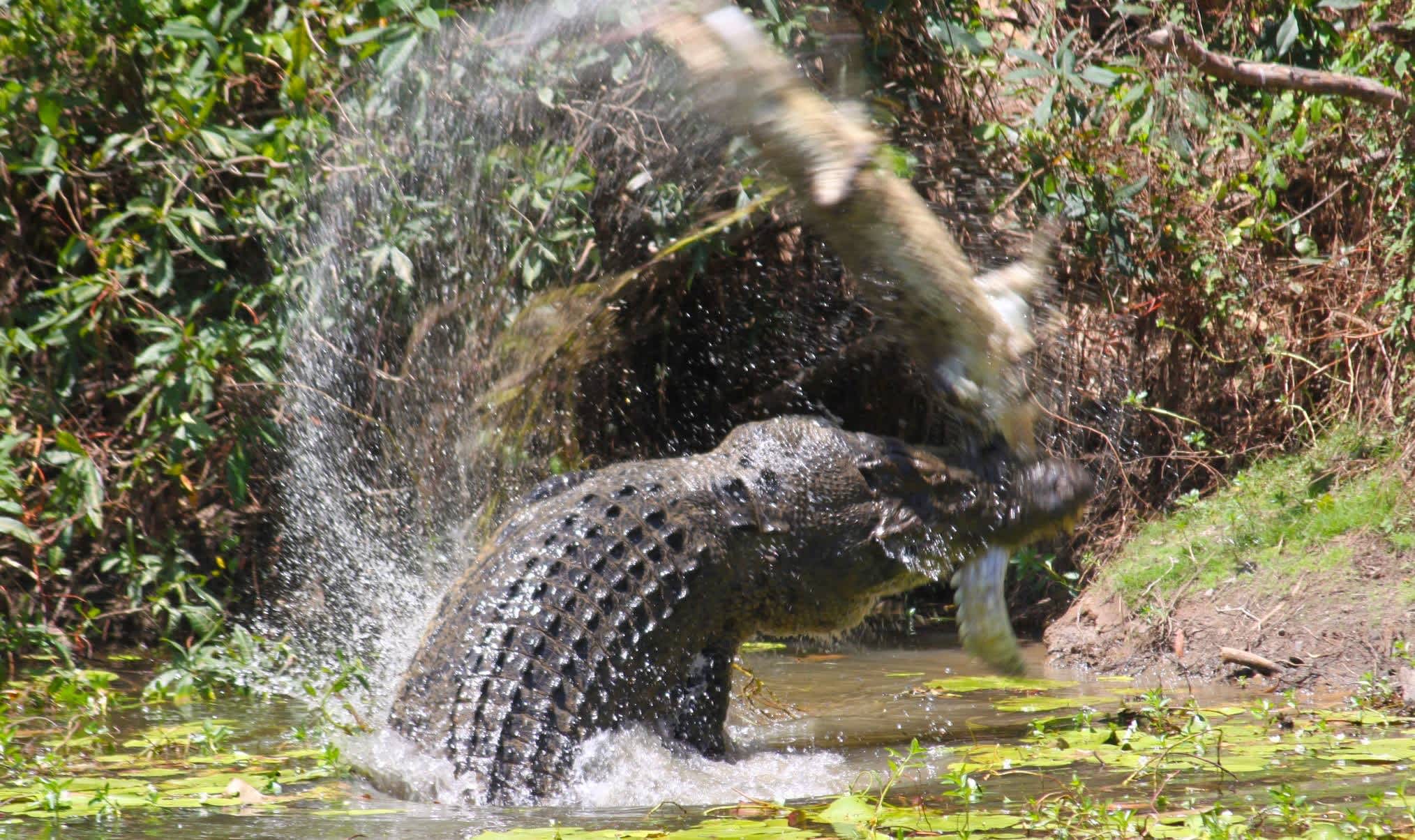Photos: Cannibal Crocodile Slams Smaller Croc to Stun, Eat It
OutdoorHub Reporters 12.02.15

It’s a croc-eat-croc world out there, and Queensland National Parks in Australia recently posted several pictures proving that fact on Facebook. The images were sent in by a visitor to Rinyirru National Park in Tropical North Queensland and involved two saltwater crocodiles in the midst of deadly combat.
Cannibalism is not uncommon among crocodiles, especially between a younger one and a much larger adult.
“This is nature at its toothiest and clawiest!” wrote Queensland National Parks, which remarked that the incident happened just yards away from a crocodile warning sign.
Experts say that conflicts—including ones that end in cannibalism—increase during the start of the wet season.
“If a big dominant male comes across a smaller male then basically he is going to want to get rid of that competitor and driving them out,” crocodile specialist Adam Britton told The Sydney Morning Herald. “That is the first thing they will try and do but if that doesn’t work they are quite happy to go and kill them.”
Remember—be croc wise in croc country bit.ly/croc-wise
Posted by Queensland National Parks on Monday, November 30, 2015
If the male is much smaller, as is the case in these photos, then it has a good chance of becoming dinner as well. As with other prey of the same size, the crocodile will lift its rival out of the water and flick its head violently. Sometimes this will tear the animal apart, in other cases it will slam the prey into the water, stunning it so the crocodile can rip it into smaller pieces.
Remember—be croc wise in croc country bit.ly/croc-wise
Posted by Queensland National Parks on Monday, November 30, 2015
American alligators employ the same methods when fighting others of their own kind. It is estimated that between six to seven percent of all young alligators are eaten by the adults of their own species. Younger alligators and crocodiles will avoid adults until they grow larger, which is part of the reason why groups of these reptiles are generally made up of individuals around the same size.
Remember—be croc wise in croc country bit.ly/croc-wise
Posted by Queensland National Parks on Monday, November 30, 2015

